Conditions
Ankylosis
Ankylosis refers to the abnormal fusion of joints, resulting in loss of mobility. It can occur due to various factors such as trauma, infection, or chronic inflammation.
Before
After
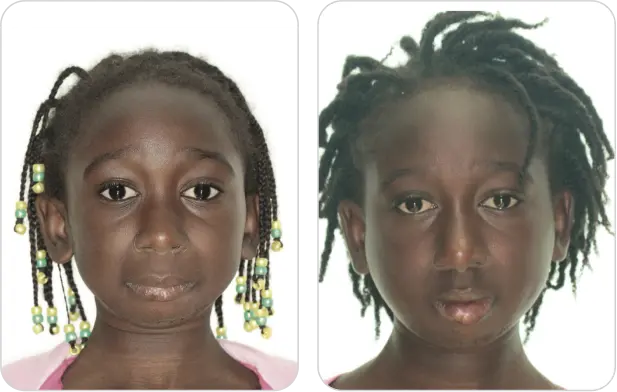
Lefort 1 Segmental Osteotomy. Bilateral Total Joint Replacement.
Before
After
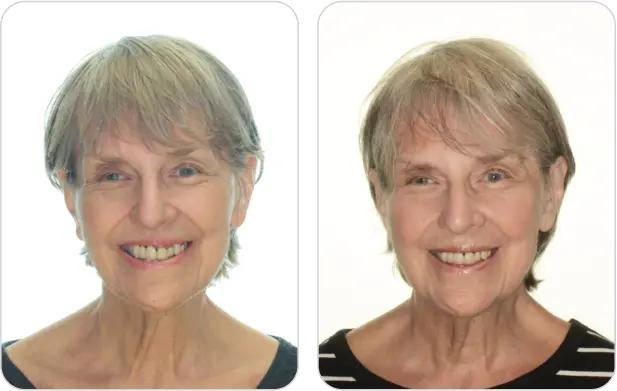
Lefort 1 Segmental Osteotomy. Bilateral Total Joint Replacement.
Condylar Hyperplasia
Condylar Hypoplasia Type 2 is a condition characterized by the unilateral overgrowth of a part of the jaw. Usually caused by a benign tumor called an osteochondroma on one condyle of the mandible.
Before
After

Bilateral High Condylectomy. Lefort 1 Segmental Osteotomy. Bilateral Saggital Split Osteotomy.
Before
After

Lefort 1 Segmental Osteotomy. Bilateral Saggital Split Osteotomy
Before
After
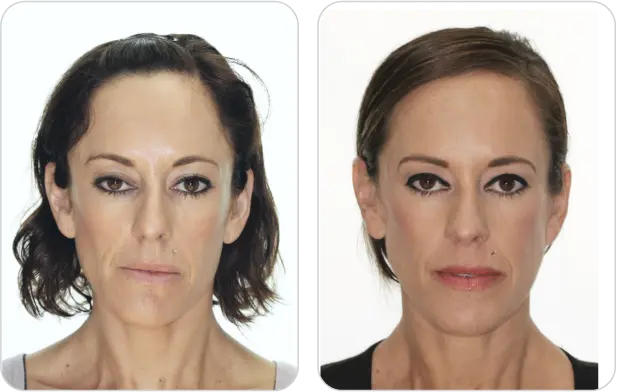
Low Condylectomy Lateral Discopexy. Lefort 1 Segmental Osteotomy. Bilateral Sagittal Split.
Before
After

Lefort 1 Osteotomy. Bilateral Saggital Split Osteotomy. Genioplasty.
Before
After
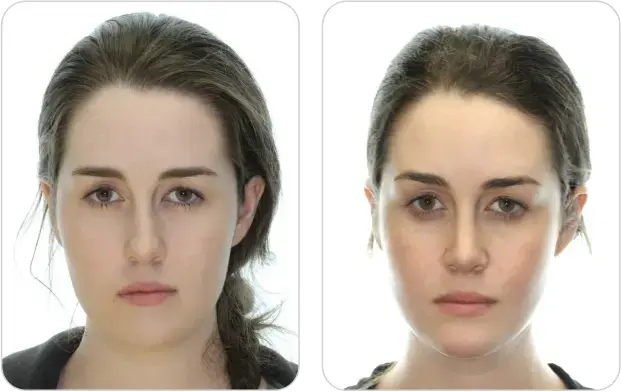
Lefort 1 Segmental Osteotomy. Bilateral Sagittal Split. Genioplasty.
Ehlers Danlos
Ehlers Danlos is a group of genetic connective tissue disorders characterized by faulty collagen production. It affects the skin, joints, blood vessels, and other organs, leading to hypermobility, joint instability, fragile skin, and easy bruising.
Before
After
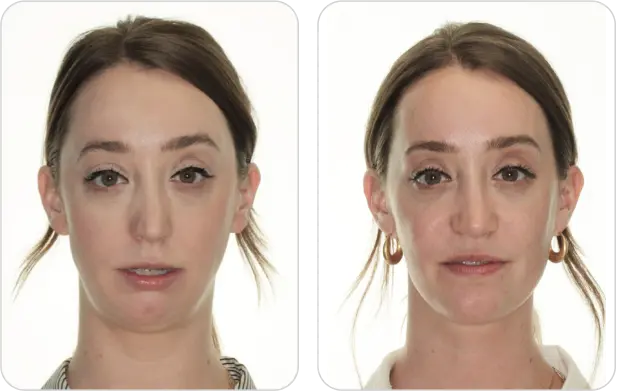
LeFort 1 Segmental Osteotomy & Bilateral Total Joint Replacement.
Before
After
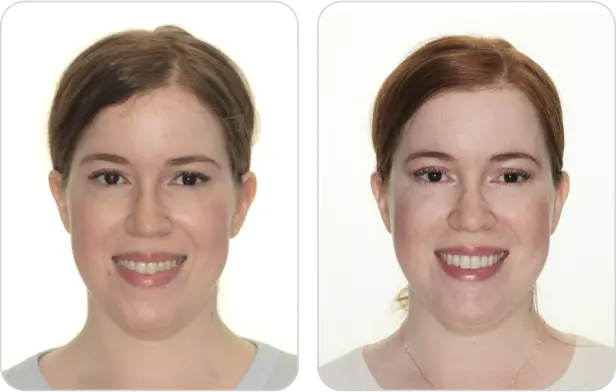
LeFort 1 Segmental Osteotomy.
Bilateral Total Joint Replacement.
Idiopathic Condylar Resorption (ICR)
Idiopathic condylar resorption (ICR), also known as condylar resorption or temporomandibular joint (TMJ) resorption, is a rare condition where the jaw joint undergoes progressive, degeneration and resorption. It primarily affects young women and can lead to significant changes in the jaw structure, including jaw pain, facial asymmetry, and bite problems.
Before
After
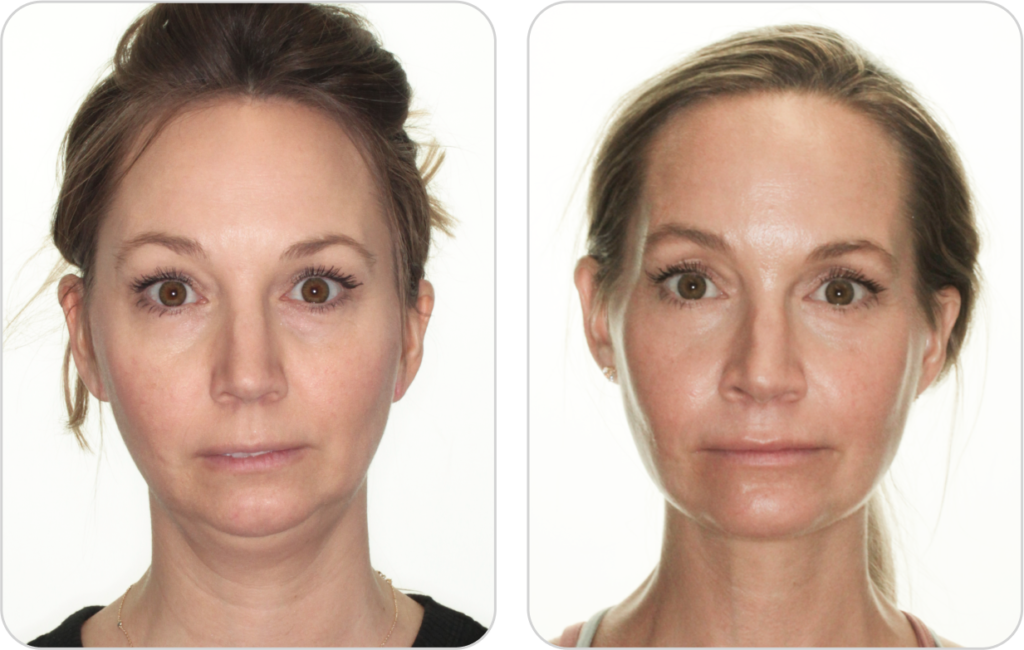
LeFort I Segmental Osteotomy. Bilateral Total Joint Replacement. Genioplasty.
Before
After

Lefort 1 Segmental Osteotomy. Bilateral Total Joint Replacement (TJR). Genioplasty.
Before
After
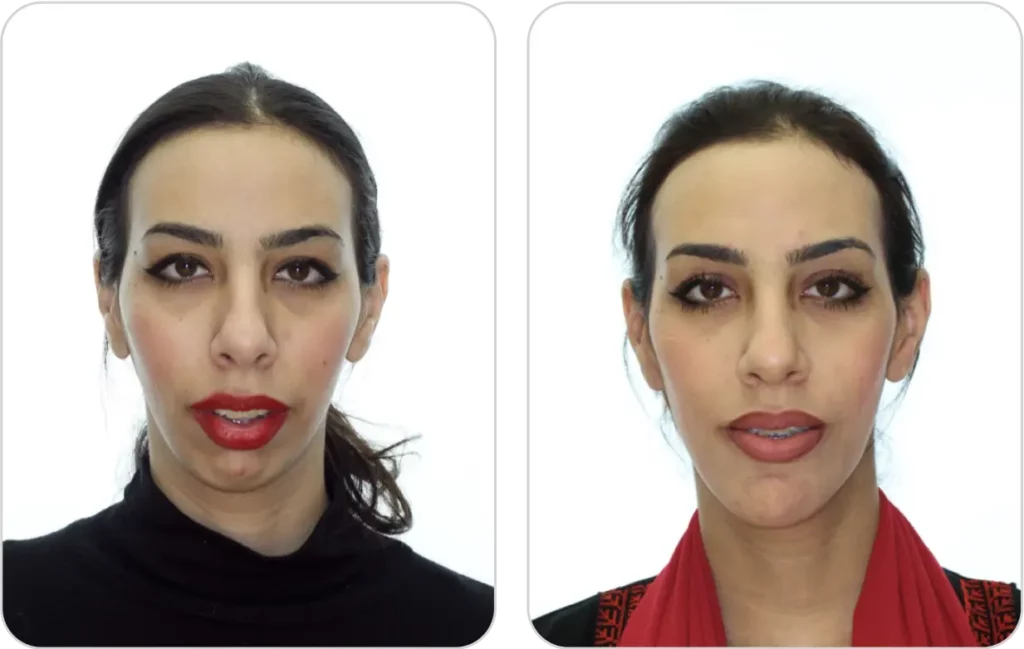
Lefort 1 Segmental Osteotomy. Bilateral Total Joint Replacement (TJR). Genioplasty.
Before
After
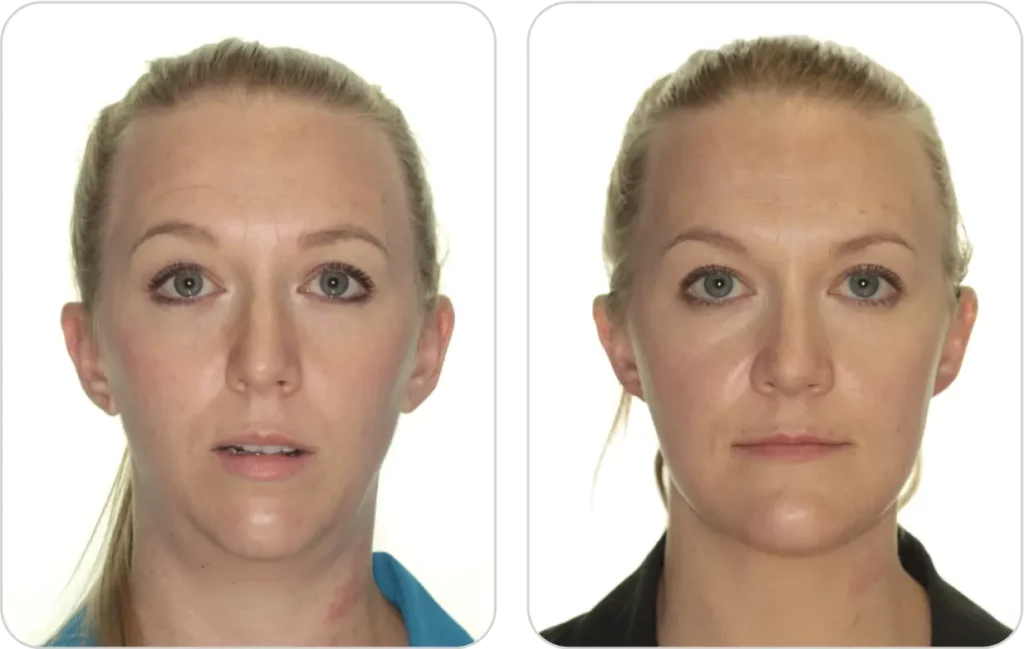
Lefort 1 Segmental Osteotomy. Bilateral Total Joint Replacement (TJR). Genioplasty.
Before
After
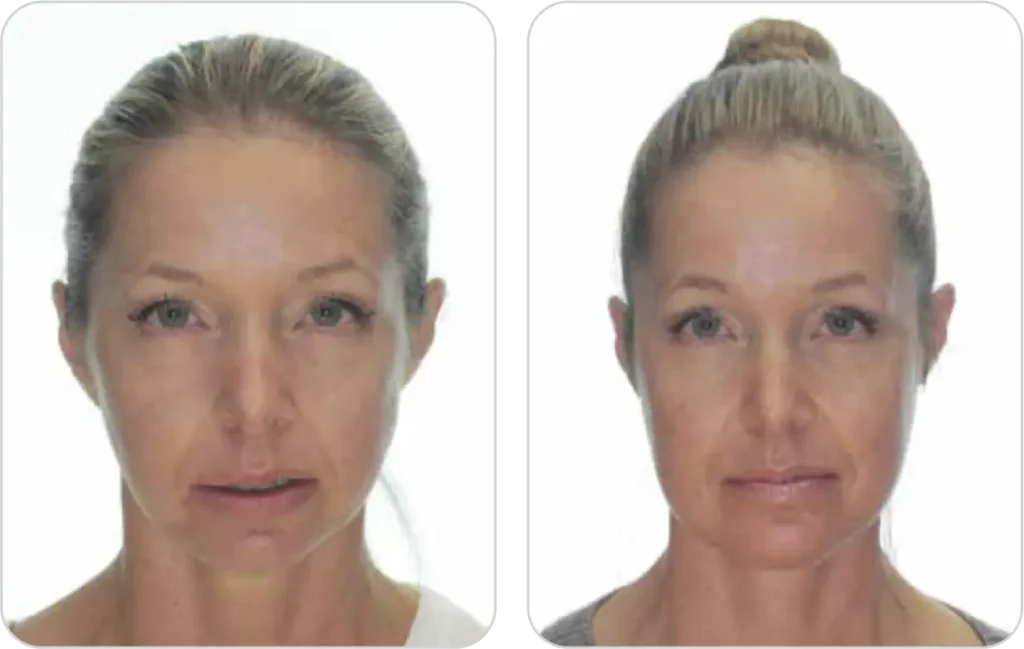
LeFort I Segmental Osteotomy. Bilateral Total Joint Replacement. Genioplasty.
Jaw Irregularities
Jaw irregularities refer to any abnormality or misalignment of the jawbone structure and its related elements. They can occur due to various reasons, including genetic factors, developmental issues, trauma or injury, medical conditions, or excessive pressure on the jaw joint.
Before
After

LeFort 1 Segmental Osteotomy. Bilateral Saggital Split Osteotomy. Counter Clockwise Rotation. Genioplasty.
Before
After
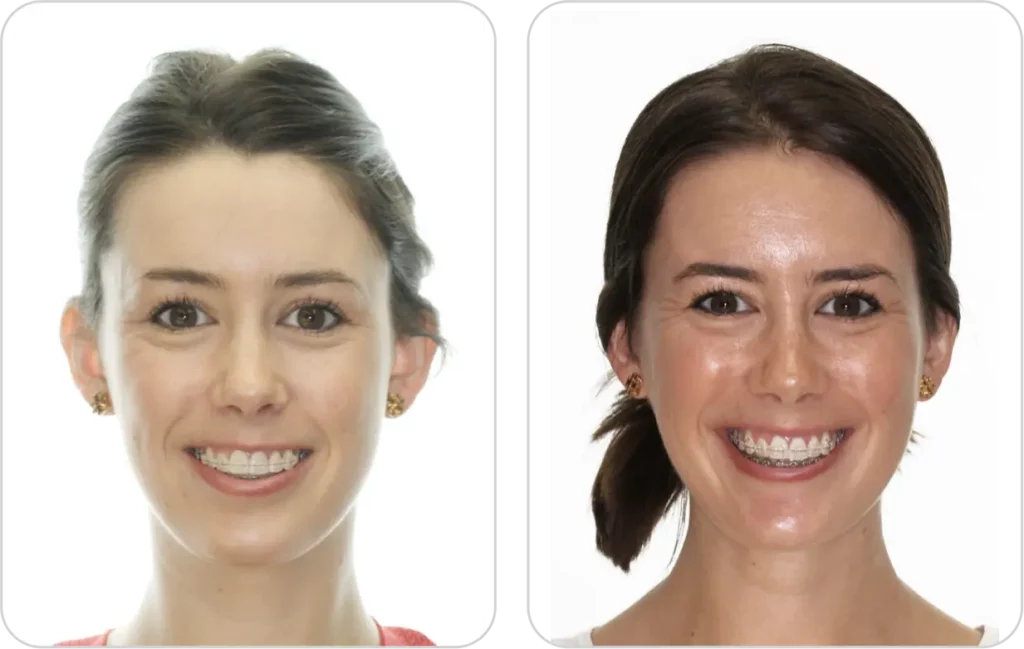
Bilateral Total Joint Replacement.
Before
After
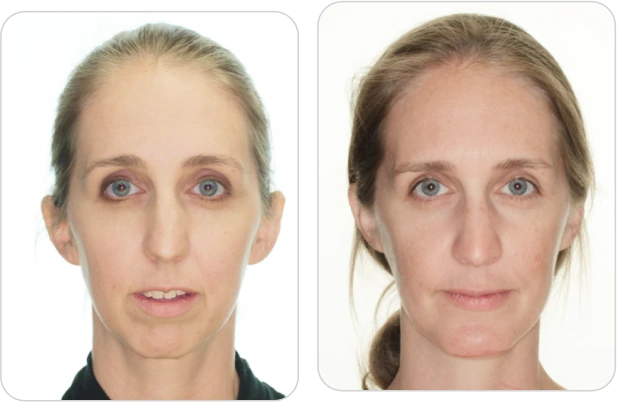
LeFort I Osteotomy. Bilateral Total Joint Replacement. Genioplasty.
Before
After
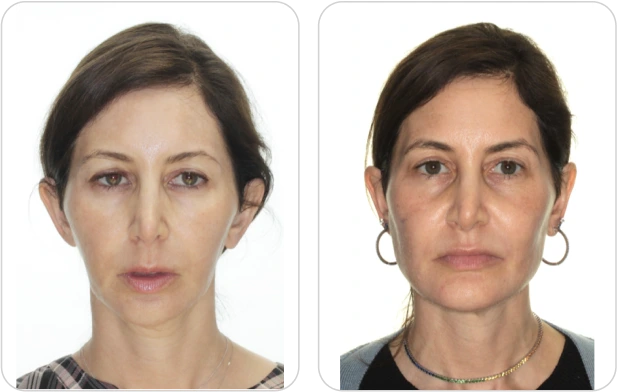
LeFort I Segmental Osteotomy. Bilateral Total Joint Replacement.
Before
After

LeFort I Segmental Osteotomy. Bilateral Sagittal Split Osteotomy.
Juvenile Idiopathic Arthritis (JIA)
Juvenile Idiopathic Arthritis (JIA) is a chronic condition that affects children and leads to jaw pain, swelling, stiffness, fatigue, and limited mobility. It is also referred to as Juvenile Rheumatoid Arthritis.
Before
After
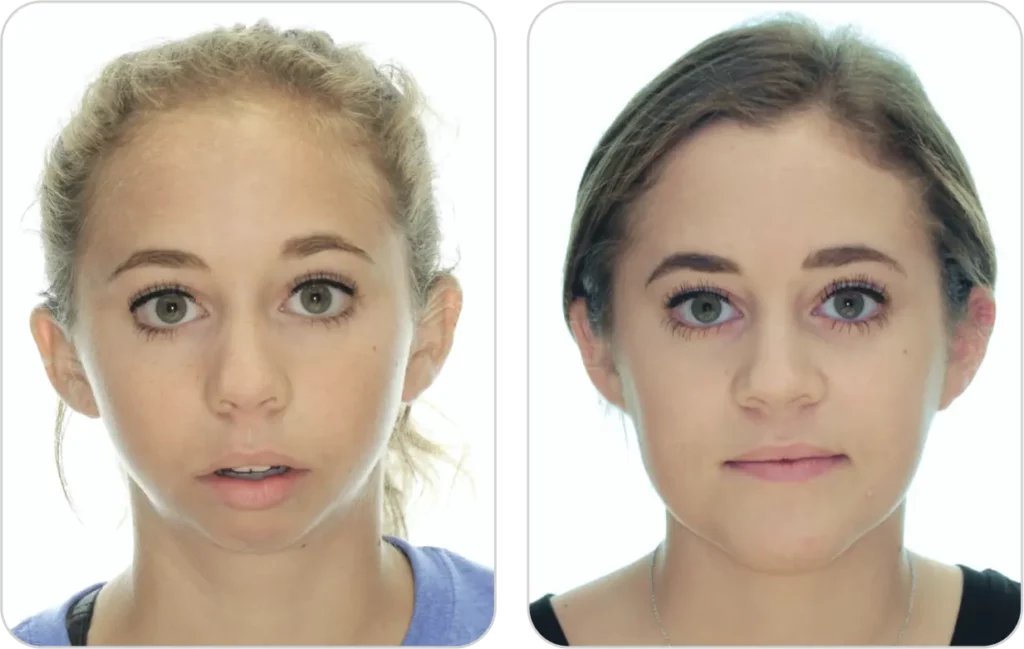
Lefort 1 Segmental Osteotomy. Bilateral Total Joint Replacement (TJR). Genioplasty.
Before
After
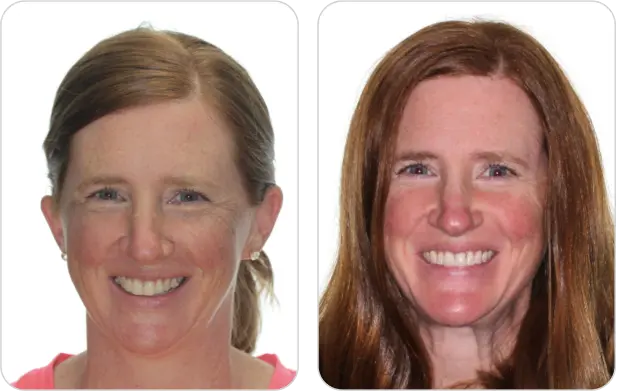
Lefort 1 Osteotomy. Bilateral Saggital Split Osteotomy. Genioplasty.
Before
After

LeFort 1 Segmental Osteotomy. Bilateral Total Joint Replacement.
Obstructive Sleep Apnea (OSA)
Obstructive Sleep Apnea is a sleep disorder characterized by repeated pauses in breathing or shallow breaths during sleep. It can lead to fragmented and poor-quality sleep, resulting in daytime fatigue, excessive sleepiness, and difficulty concentrating. It is typically caused by the relaxation of throat muscles, which obstructs the airway and disrupts normal breathing patterns.
Before
After
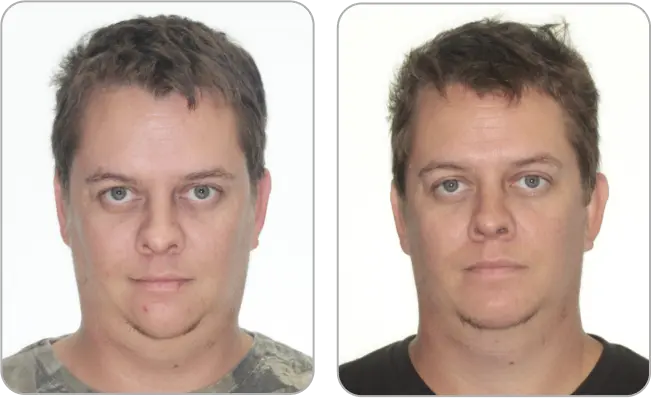
First surgery: Maxillomandibular Advancement. Second Surgery: Maxillomandibular Advancement. Distraction Osteogenesis on the Lower Jaw.
Before
After
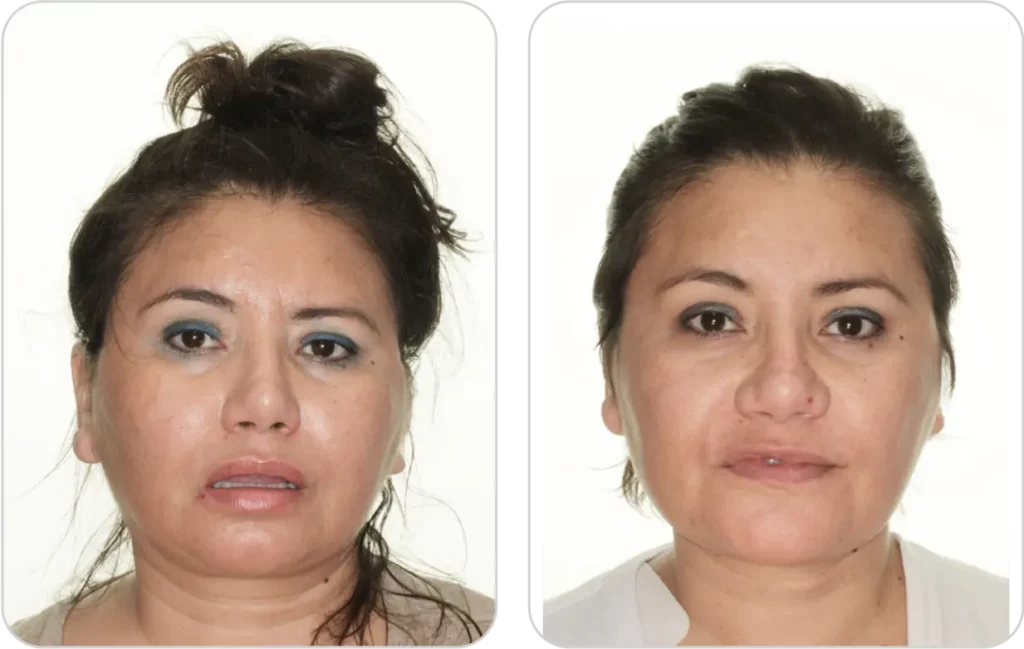
Bilateral High Condylectomy. Lefort 1 Segmental Osteotomy. Bilateral Saggital Split Osteotomy.
Before
After
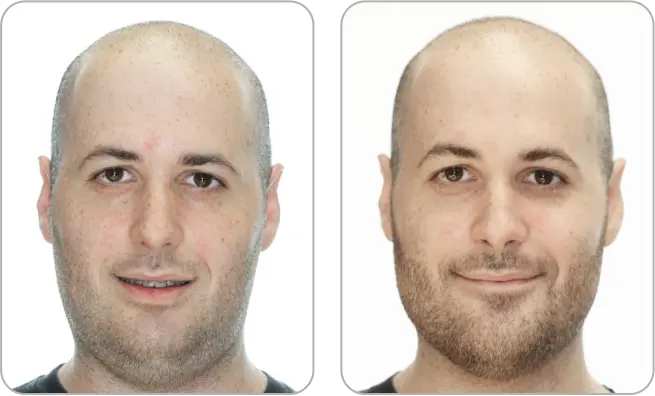
First surgery: Maxillomandibular Advancement. Second Surgery: Maxillomandibular Advancement. Distraction Osteogenesis on the Lower Jaw.
Before
After
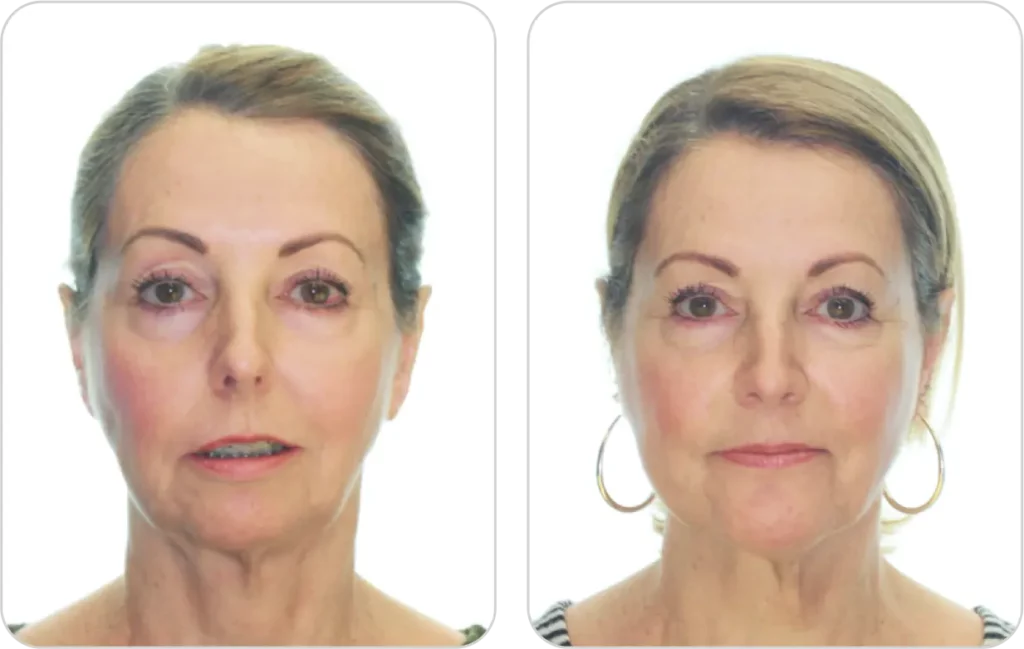
Lefort 1 Segmental Osteotomy. Bilateral Total Joint Replacement (TJR).
Before
After
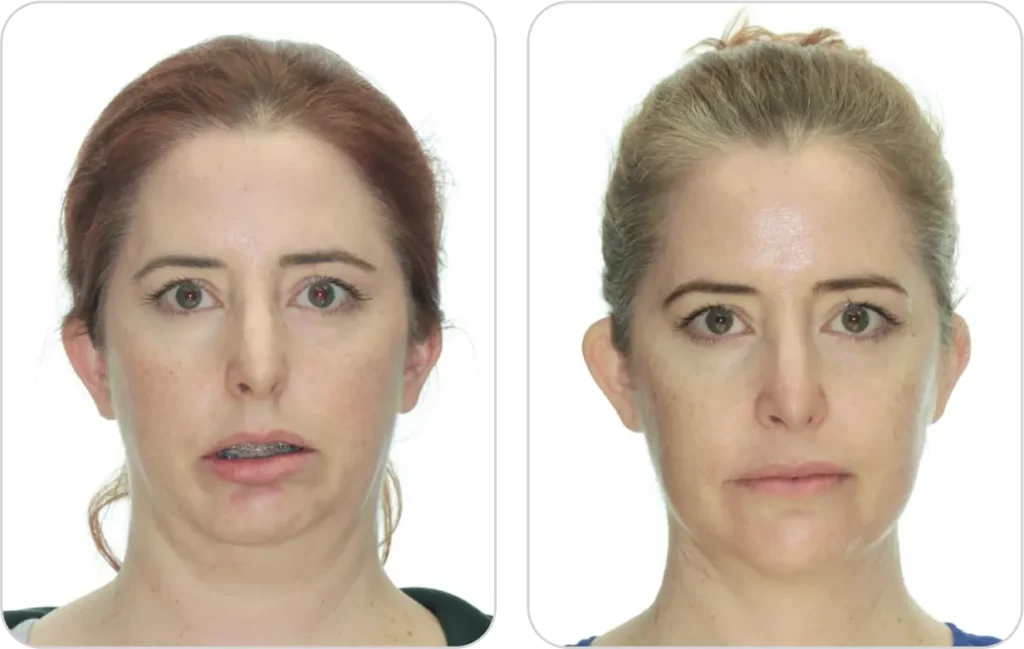
Lefort 1 Segmental Osteotomy. Bilateral Total Joint Replacement (TJR). Genioplasty.
Osteoarthritis
Osteoarthritis, a degenerative joint disease, can affect the temporomandibular joints (TMJ) responsible for jaw movement. It is caused by the breakdown of cartilage and subsequent changes in the underlying bone. Over time, the TMJ may experience wear and tear, leading to joint degeneration. Factors such as aging, previous trauma, misalignment, and genetic predisposition can contribute to the development of osteoarthritis in the jaw joints.
Before
After
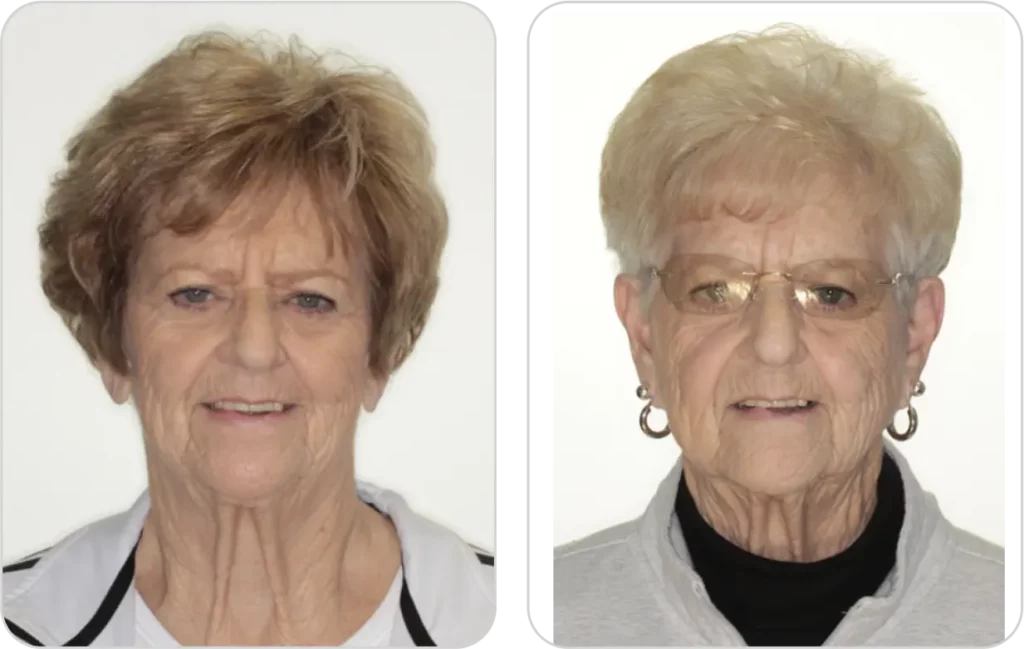
LeFort I Segmental Osteotomy. Bilateral Total Joint Replacement.
Psoriatic Arthritis
Psoriatic arthritis (PsA) is a chronic inflammatory condition that affects both the skin and joints. It is a type of autoimmune disease, meaning that the immune system attacks healthy tissues, leading to inflammation.is in the jaw joints.
Before
After

LeFort I Segmental Osteotomy. Bilateral Total Joint Replacement. Genioplasty.
Scleroderma
Scleroderma is a rare autoimmune disease that causes thickening and hardening of the skin and connective tissues. It can also affect internal organs, leading to various symptoms such as Raynaud’s phenomenon, skin tightening, joint pain, and organ dysfunction. Scleroderma can complicate surgeries due to skin and tissue involvement, increased risk of scarring, impaired wound healing, and potential complications in affected organs.
Before
After
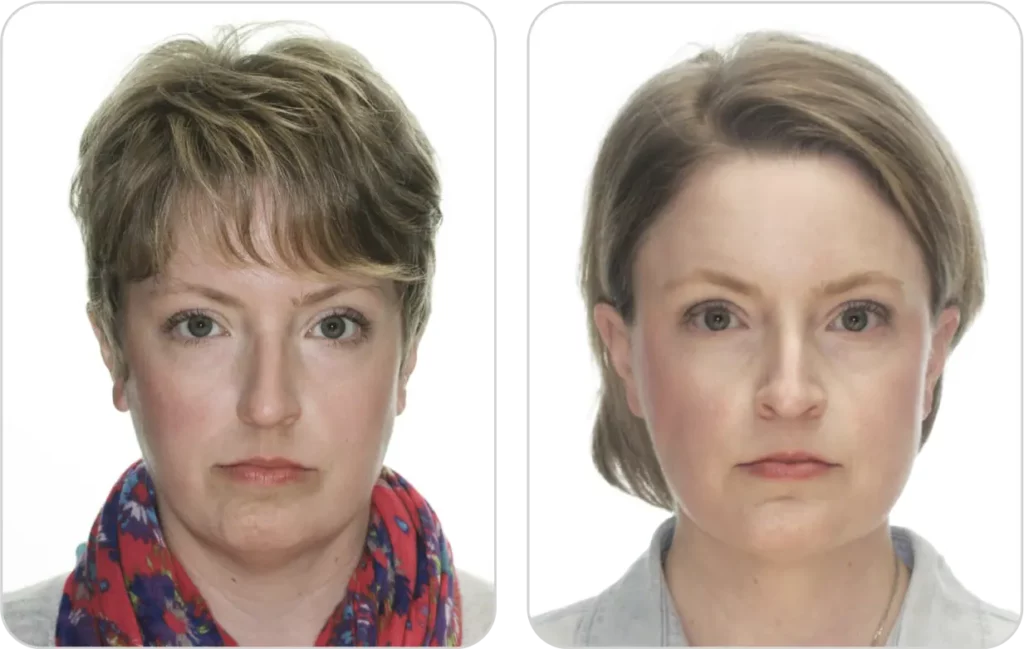
Lefort I Segmental Osteotomy. Bilateral Total Joint Replacement (TJR). Genioplasty.
Before
After
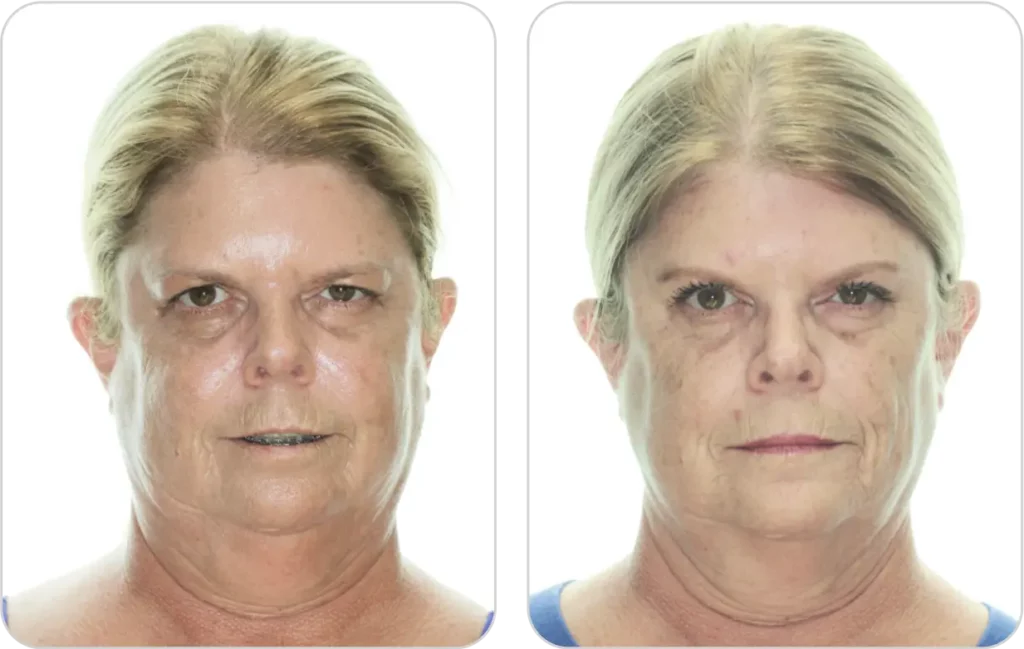
LeFort I Segmental Osteotomy. Bilateral Total Joint Replacement. Genioplasty.
Septic Arthritis
Septic Arthritis of the Temporomandibular Joint (TMJ) is a rare but serious bacterial infection in the joint, often caused by injury, surgery, or nearby infections. It leads to pain, swelling, redness, warmth, and difficulty moving the jaw, potentially causing permanent damage if not treated.
Before
After

Lefort 1 Segmental Osteotomy. Bilateral Total Joint Replacement (TJR). Genioplasty.
Sydromic Goldenhar Hemifacial Microsomia
Goldenhar Syndrome is a rare congenital disorder with facial and craniofacial abnormalities, ear underdevelopment, and other potential issues like cleft lip, heart defects, and kidney problems. Severity varies.
Before
After

Lefort 1 Segmental Osteotomy. Bilateral Total Joint Replacement.
Trauma
Trauma can harm jaw joints or bones, causing temporomandibular joint issues or misalignment. Symptoms include pain, difficulty chewing, clicking or locking jaws, impacting speech, eating, and quality of life.
Before
After

Lefort 1 Segmental Osteotomy. Bilateral Total Joint Replacement (TJR). Genioplasty.
Before
After

Lefort 1 Segmental Osteotomy. Bilateral Total Joint Replacement (TJR).
